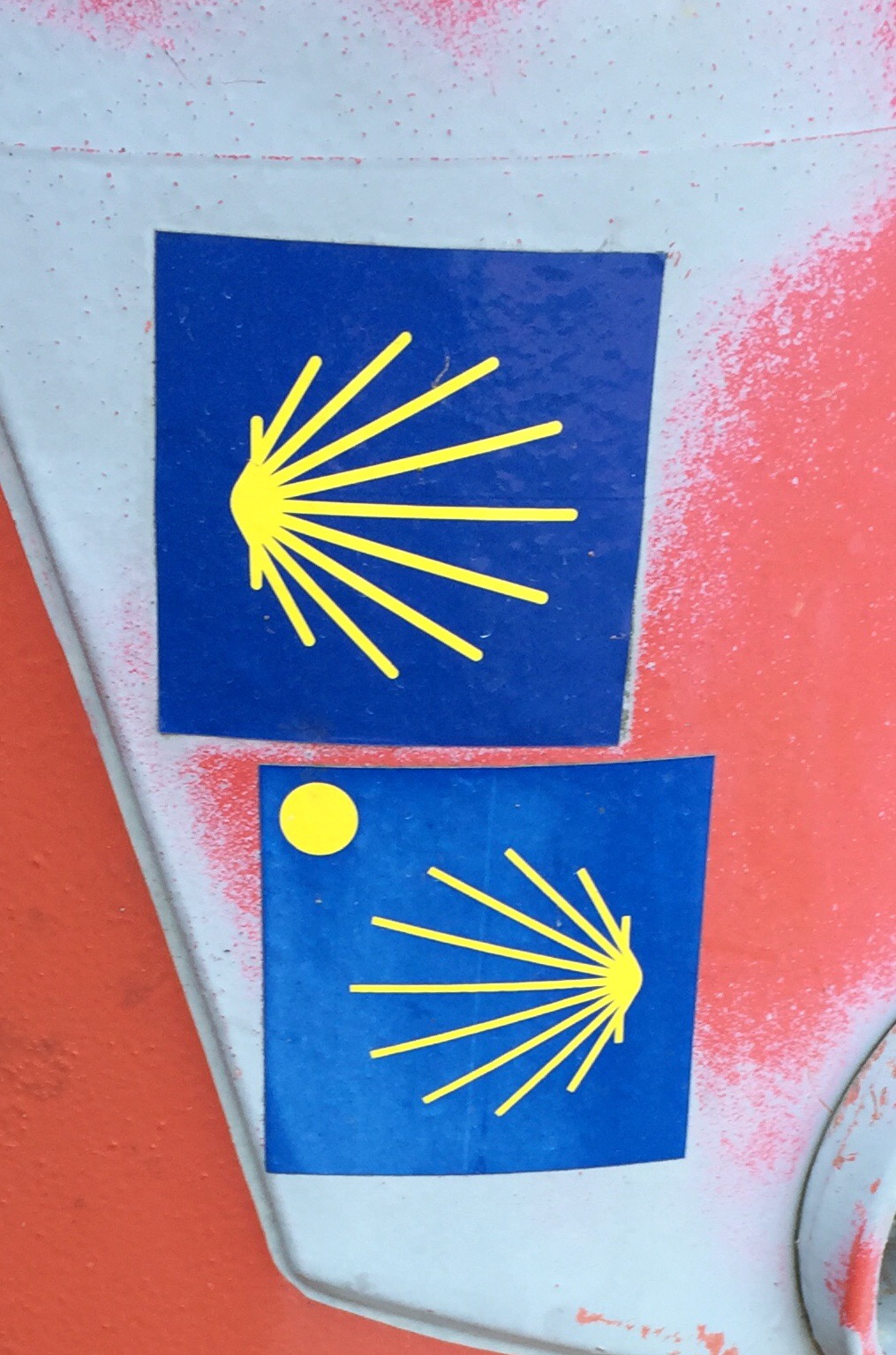Distance 15 km. Temperature 71F
Breakfast this morning was the most robust I have ever been offered in France: orange juice, at least two breads, fresh fruit compote, six cheeses, coffee or tea. And since I am on a low-carbohydrate diet, Monsieur fixed bacon and eggs as well.

Then we spent an hour trying to sort out a reservation for tonight, resorting to Google when all the options listed in the Pilgrim guide came up empty.
It has rained overnight, so things are quite humid, and there are dark clouds over the ridges to the west.

There are two ways to cross the Rhône: either the D37b bridge at Saint-Alban-sur-Rhône, or the bridge at Condrieu. The D37b, while shorter and marked as the through-route to SDC, has much more commerce on its approach and -reportedly- somewhat less pedestrian safety in its crossing. It was the original plan, once upon a time. However, since my lodging was only a km away from the Condrieu bridge, I went that way. The GR65 route goes via Condrieu and offers a perfectly lovely and peaceful paved bike route down to Chavaney.


Underway at 0900 due to aforementioned delay, reaching Chavaney about 1130. It’s very pleasant walking along the river, watching the swans. Fall is just beginning to touch here; the fall berries (rose hips? Pyracantha?), yellow fall crocus, and honeysuckle all add color. Morning joggers and some cyclists pass occasionally. A few of the bicycles are rigged for touring.
The Lyon area is famous for its trompe l’oeil paintings, with 3-D realistic street scenes. Chavaney sports one too.

Just as the route departs the main street there is a small grocery, and 50m further a small park by a stream, which offers a shady bench for a noon pause.
After exiting Chavanaey the climb starts, and today ascends about 260 meters (155 to about 410 – some of the crossroads signs indicate elevation). This has an early steeper section that is only a footpath of an ancient sort, judging by the depth of moss on the rock walls and the banks way over my head.
The climb is broken up by a stop at a small pilgrim chapel, recently renovated and open. A large group of walkers could take shelter here, or just rest a bit. Unfortunately no pilgrim stamp. I met three German women from Lake Constance as I was leaving; they too are walking to Le Puy this year. Three earlier French walkers did not stop to speak.
Later on, the climb is on more gentle paved farm roads. The grape harvest is starting, and I see quite a few tractors towing carts of grape bins. No wonder, as pregnant as these vines are looking.

I leave the marked GR65 at Ribaudy, heading up more farm roads (some paved, some not) to my lodging.
A passing shower tests how quickly I can rig for rain, but clears after only a few minutes and I escape my fig tree shelter. The sun comes out and dries me off in short order.
Lodging: Le Grand Noë
This is a gorgeously renovated farmhouse on a ridge with expansive views of the Rhône valley. Also more high-end than I would normally use, but finding a place was very difficult. M & M both speak English (trying to keep up with their Anglophone grandchildren), and are very friendly and hospitable.
Madame prepares a lovely dinner in her impressive kitchen: rolled pork roast, green beans, ratatouille, tossed salad, and a cheese course followed by apple-pear crumble. Absolutely delicious! We were joined at dinner by a German couple (he formerly a Swiss) so it was a Tri-lingual conversation around dinner.
Turns out, the reason all us walkers are having a hard time finding lodging near Chavaney is that the new nuclear plant employs 6000 people, and the employees and commercial travelers have filled up the available rooms. This situation will likely persist for awhile, so walkers are advised to book well in advance in this area (a days march radius around Chavaney).






























































































































